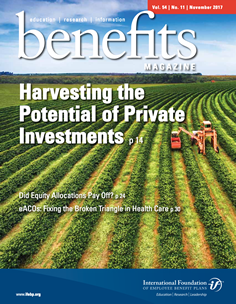By Susan Loconto Penta
•
28 Apr, 2020
The impacts of the coronavirus are significant, regardless of location or vocation, company or community, age or gender. We find ourselves marveling at our clients as they do their best to keep delivering on their promises to customers, members and stakeholders, even as many are considered “non-essential.” At MIDIOR, the nature of our work and the location of our clients has necessitated virtual work for quite some time. We also find ourselves in the fortunate position of having made recent investments in the processes, platforms and training that enable a truly remote work environment. That said, we could not have imagined our current situation, where we are testing the limits of what we can do every day. For our union and fund office clients, a shift to remote work can be particularly challenging – because some work cannot be done remotely (i.e. it is difficult to swing a hammer virtually) and because the norm for benefit services has centered on high touch, personalized, in-person work. Most, if not all, of our clients have been pushed further along the “remote work” and “mobile access” journey and now, more than ever, the value of quality member benefit systems, administration platforms, strong IT teams and mobile applications is visible. Today’s question is not “if” teams can work remotely and “how” members can access their benefit information at any time and from anywhere, but “when.” So, irrespective of where you are on your journey, now is a good time to sit down with your leadership teams and discuss your current situation and what a new normal will look like. The following is a quick list of questions to consider as you dialogue with your teams about making remote work and mobile access a reality. I hope it is helpful. Which jobs can be done while working remotely? For those that can’t, is it really impossible to do the work remotely or is it something else (e.g. people aren’t trained, guidelines are not in place, platforms do not exist or even unconscious bias against remote work for particular jobs)? Are the basic technology tools in place to make this work? This includes remote access via VPN, or remote or virtual desktops, internal instant messaging platforms like Slack and the ability to conduct video meetings (e.g. Microsoft Teams, Skype, Zoom, Lifesize). How much security is required and how much training do your teams need? Do you have guidelines and clear expectations about what it means to work remotely? Timing can get blurry when you are at home in terms of when you are at work and when you are not. Define ways for employees to “check in” and “check out” along with a new roster of team meetings. Can you service members remotely? There is no (technical) reason your phone and email systems can’t work 100% as well when your staff is distributed. Turning things off is not the answer. If anything, this is a time when members need more service and immediate answers. This may require restructuring workflows in the short term but doing this now will give you a leg up in the future. Do you have a member portal? Is it a real mobile app with sufficient data to answer member’s basic questions? If not, think about how to enable smart phone access to your benefit systems quickly and put a plan in place for a permanent solution. It appears that we all need to visualize a future where remote work, at least for some, and self-service everything will be the norm. We can’t turn the clock back, but we can set ourselves up for a better future. See what’s hard now and incorporate an approach to moving through any obstacles and make sure your technology roadmap accounts for a future that includes remote work and member self-service. Making it work is not trivial but it is not impossible either. I hope this is helpful and we always want to hear from you if you have ideas on how we can adapt our services to be helpful in these complicated times. And lastly, for anyone reading this that has someone in their circle that is on the front lines, please say an extra thanks from us. And for everyone else holding it together in the background, no matter how, remember we all have a role to play in our community’s recovery.










